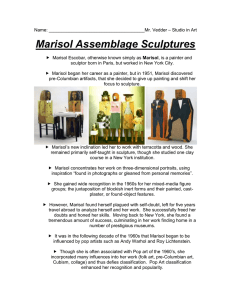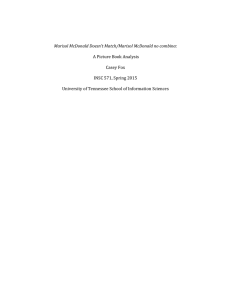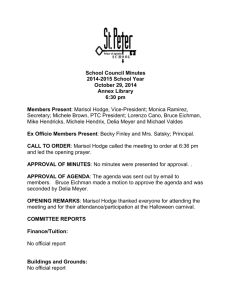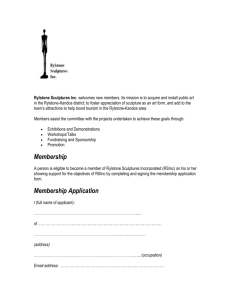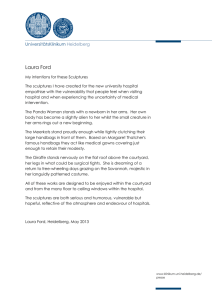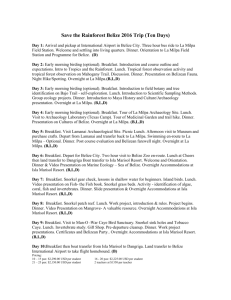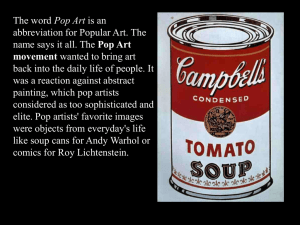sculptures nationally
advertisement
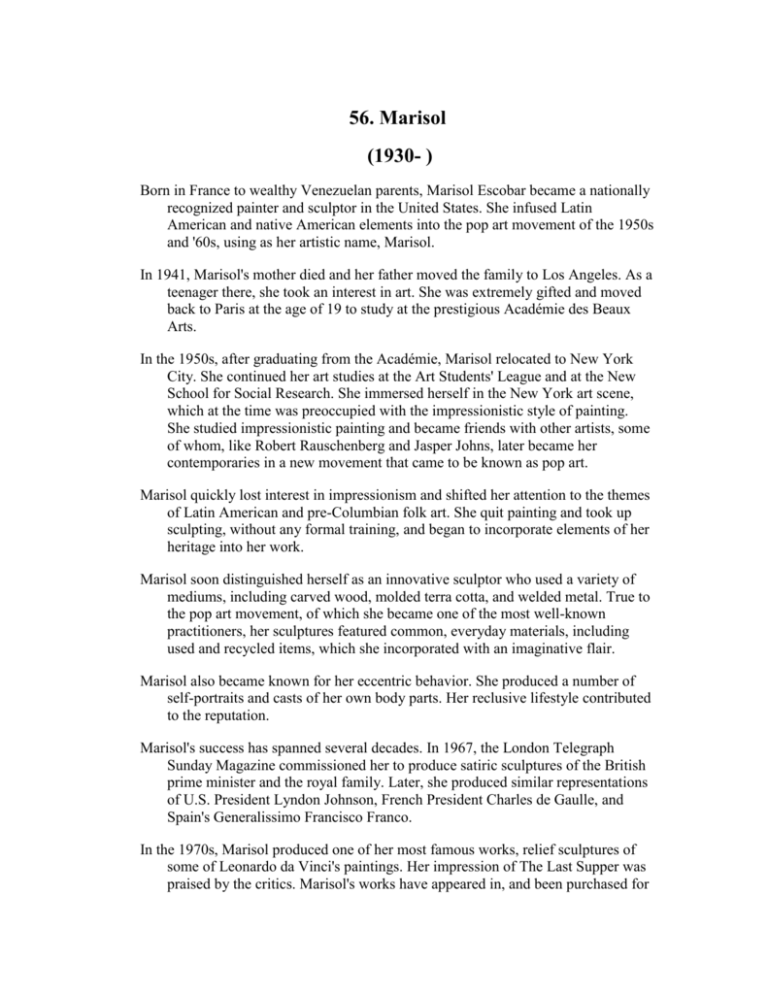
56. Marisol (1930- ) Born in France to wealthy Venezuelan parents, Marisol Escobar became a nationally recognized painter and sculptor in the United States. She infused Latin American and native American elements into the pop art movement of the 1950s and '60s, using as her artistic name, Marisol. In 1941, Marisol's mother died and her father moved the family to Los Angeles. As a teenager there, she took an interest in art. She was extremely gifted and moved back to Paris at the age of 19 to study at the prestigious Académie des Beaux Arts. In the 1950s, after graduating from the Académie, Marisol relocated to New York City. She continued her art studies at the Art Students' League and at the New School for Social Research. She immersed herself in the New York art scene, which at the time was preoccupied with the impressionistic style of painting. She studied impressionistic painting and became friends with other artists, some of whom, like Robert Rauschenberg and Jasper Johns, later became her contemporaries in a new movement that came to be known as pop art. Marisol quickly lost interest in impressionism and shifted her attention to the themes of Latin American and pre-Columbian folk art. She quit painting and took up sculpting, without any formal training, and began to incorporate elements of her heritage into her work. Marisol soon distinguished herself as an innovative sculptor who used a variety of mediums, including carved wood, molded terra cotta, and welded metal. True to the pop art movement, of which she became one of the most well-known practitioners, her sculptures featured common, everyday materials, including used and recycled items, which she incorporated with an imaginative flair. Marisol also became known for her eccentric behavior. She produced a number of self-portraits and casts of her own body parts. Her reclusive lifestyle contributed to the reputation. Marisol's success has spanned several decades. In 1967, the London Telegraph Sunday Magazine commissioned her to produce satiric sculptures of the British prime minister and the royal family. Later, she produced similar representations of U.S. President Lyndon Johnson, French President Charles de Gaulle, and Spain's Generalissimo Francisco Franco. In the 1970s, Marisol produced one of her most famous works, relief sculptures of some of Leonardo da Vinci's paintings. Her impression of The Last Supper was praised by the critics. Marisol's works have appeared in, and been purchased for the permanent collections of, some of the most respected museums in the world. In 1991, she was honored by a display of her sculptures in the National Portrait Gallery in Washington, D.C.
